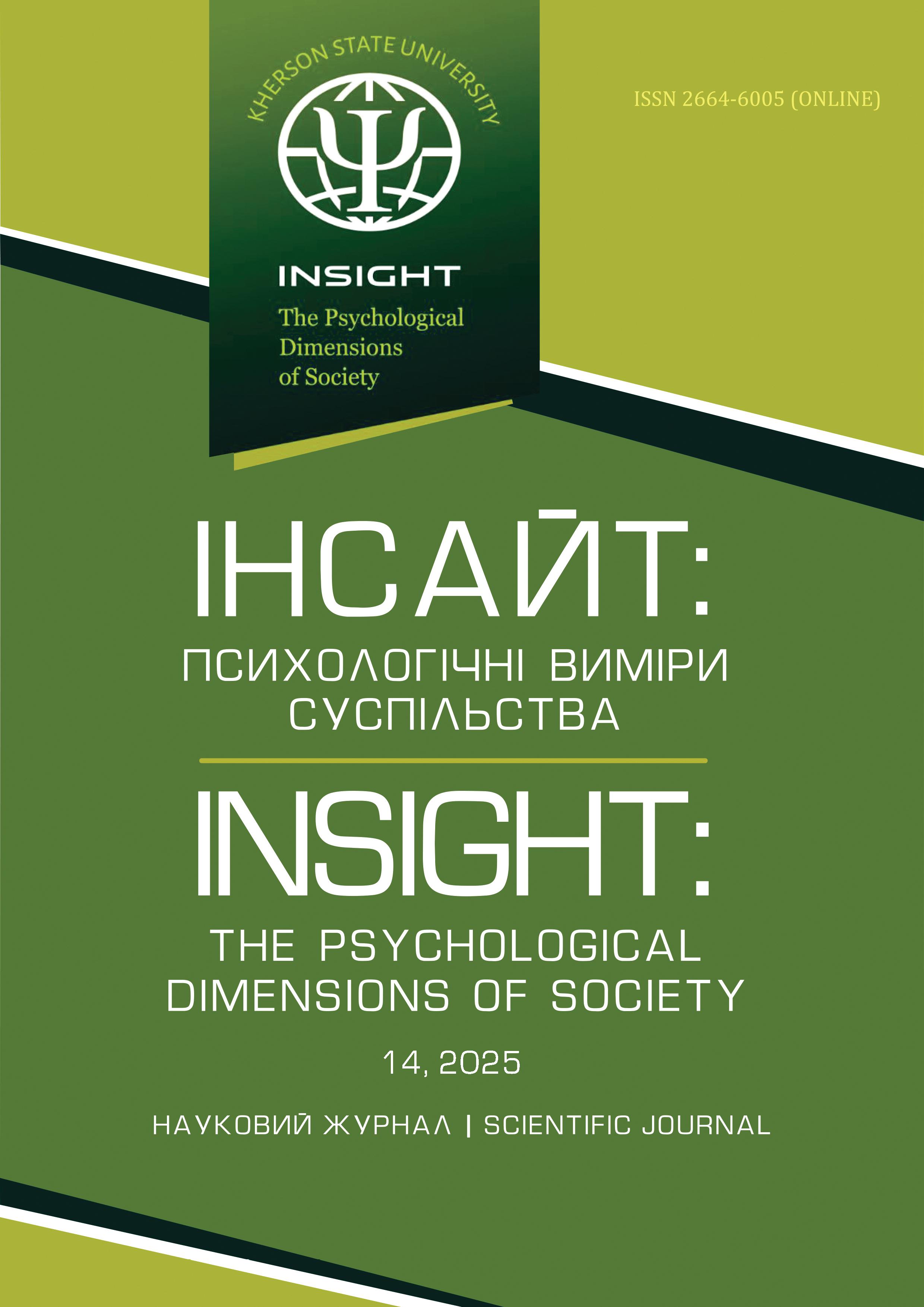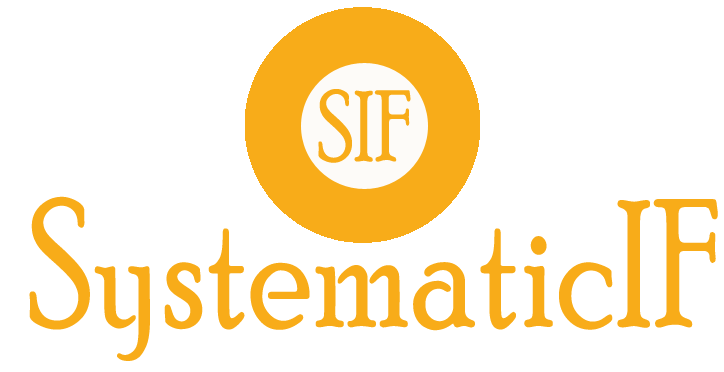Psychometric Properties of the Scale “5C Psychological Antecedents of Vaccination”: Ukrainian Sample
Abstract
Despite the critical situation in Ukraine caused by the russian military invasion, the issue of vaccination remains a priority both during and after the war. Accordingly, attitudes toward COVID-19 vaccination are a key aspect for understanding the vaccination issue in general. The purpose of this study is to adapt and validate the Ukrainian version of the “5C Psychological Antecedents of Vaccination” scale, an instrument designed to measure psychological prerequisites for vaccination, and to investigate its psychometric properties in a Ukrainian sample. Methods. Validation was performed on a sample of 392 respondents. The psychometric properties of the scale were assessed using Cronbach's alpha (to determine the measure of internal consistency), exploratory factor analysis (EFA), confirmatory factor analysis (CFA), and correlation analysis with the “Multidimensional Health Locus of Control” (MHLC) scales. Results. Cronbach’s alpha values for the five subscales ranged from .65 to .84, indicating satisfactory to good internal consistency. Exploratory factor analysis (EFA) resulted in a four-factor solution. Using confirmatory factor analysis (CFA), the five-factor model was confirmed (according to the comparative fit index (CFI>.95), Tucker-Lewis index (TLI>.95), root mean square error of approximation (RMSEA>.05/RMSEA<. 08), standardized root mean square residual (SRMR<.08)), which corresponds to the original scale “5C Psychological Antecedents of Vaccination” and includes the subscales “Confidence”, “Complacency”, “Constraint”, “Calculation”, “Collective Responsibility”. The correlation analysis revealed significant correlations between the “5C Psychological Antecedents of Vaccination” scale and the “Multidimensional Health Locus of Control” (MHLC) scales, which confirms their convergent and discriminant validity. Discussion and conclusions. The Ukrainian version of the “5C Psychological Antecedents of Vaccination” scale demonstrated satisfactory psychometric properties, namely internal consistency, factor structure, convergent and discriminant validity. The Ukrainian version of the “5C Psychological Antecedents of Vaccination” scale can be used to conduct research on a Ukrainian sample.
Downloads
References
Malysheva, K., & Lytvyn, S. (2022). Neuropsychological analysis of the nature of extroversion: how to build an individual “Hedonistic profile”. Psychological Journal, 8(1), 61–87. https://doi.org/10.31108/1.2022.8.1.5
Ministerstvo u spravah veteraniv. (2023). Potrebi naselennia u posluhah sferi psihichnoho zdorovia ta krashchi praktiki nadannia posluh u rozvinenih krainah (Rozbudova systemi hromadskogo zdorovia). [Ministry of Veterans Affairs. Population needs for mental health services and best practices in the provision of services in developed countries (Building a sustainable public health system).] https://mva.gov.ua/storage/app/ sites/1/uploaded-files/_потреб_та_світовий%20 досвід.pdf
Abd ElHafeez, S., Elbarazi, I., Shaaban, R., ElMakhzangy, R., Ossama Aly, M., Alnagar, A., ... & Mohamed Ghazy, R. (2021). Arabic validation and cross-cultural adaptation of the 5C scale for assessment of COVID-19 vaccines psychological antecedents. PLoS One, 16(8), e0254595. https://doi.org/10.1371/journal.pone.0254595
Abdou, M. S., Kheirallah, K. A., Aly, M. O., Ramadan, A., Elhadi, Y. A. M., Elbarazi, I., ... & Ghazy, R. M. (2021). The coronavirus disease 2019 (COVID-19) vaccination psychological antecedent assessment using the Arabic 5c validated tool: An online survey in 13 Arab countries. PLoS One, 16(11), e0260321. https://doi.org/10.1371/journal.pone.0260321
Bénabou, R., & Tirole, J. (2000). Self-confidence and social interactions. NBER Working Paper, (w7585). http://www.nber.org/papers/w7585
Betsch, C., Habersaat, K. B., Deshevoi, S., Heinemeier, D., Briko, N., Kostenko, N., ... & Sivelä, J. (2020). Sample study protocol for adapting and translating the 5C scale to assess the psychological antecedents of vaccination. BMJ open, 10(3), e034869. https://doi.org/10.1136/bmjopen-2019-034869
Betsch, C., Schmid, P., Heinemeier, D., Korn, L., Holtmann, C., & Böhm, R. (2018). Beyond confidence: Development of a measure assessing the 5C psychological antecedents of vaccination. PloS one, 13(12), e0208601. https://doi.org/10.1371/journal.pone.0208601
Bürkner, P.-C. (2017). brms: An R Package for Bayesian Multilevel Models Using Stan. Journal of Statistical Software, 80(1). https://doi.org/10.18637/jss.v080.i01
«Carpenter, B., Gelman, A., Hoffman, M. D., Lee, D., Goodrich, B., Betancourt, M., … Riddell, A. Chumachenko, D., & Chumachenko, T. (2022). Impact of war on the dynamics of COVID-19 in Ukraine. BMJ Global Health, 7(4), e009173. http://dx.doi.org/10.1136/bmjgh-2022-009173
Geiger, M., Rees, F., Lilleholt, L., Santana, A. P., Zettler, I., Wilhelm, O., … Böhm, R. (2022).
Henkel, L., Sprengholz, P., Korn, L., Betsch, C., & Böhm, R. (2022). The association between vaccination status identification and societal polarization. Nature Human Behaviour. https://doi.org/10.1038/s41562-022-01469-6
Hilbig, B. E., Glöckner, A., & Zettler, I. (2014). Personality and prosocial behavior: linking basic traits and social value orientations. Journal of Personality and Social Psychology, 107(3), 529. https://psycnet.apa.org/doi/10.1037/a0036074
Karafillakis, E., Dinca, I., Apfel, F., Cecconi, S., Wűrz, A.,Takacs, J., ... Larson, H. J. Kurapov, A., Danyliuk, I., Loboda, A., Kalaitzaki, A., Kowatsch, T., Klimash, T., et. al. Kurapov, A., Danyliuk, I., Loboda, A., Kalaitzaki, A., Kowatsch, T., Klimash, T., & Predko, V. (2023). Six months into the war: a first-wave study of stress, anxiety, and depression among in Ukraine. Frontiers in Psychiatry, 14. https://doi.org/10.3389/fpsyt.2023.1190465
Kurapov, A., Pavlenko, V., Drozdov, A., Bezliudna, V., Reznik, A., & Isralowitz, R. (2022a). Toward an understanding of the Russian-Ukrainian war impact on university students and personnel. Journal of Loss and Trauma, 1–8. https://doi.org/10.1080/15325024.2022.2084838
Kwok, K. O., Li, K.-K., WEI, W. I., Tang, A., Wong, S. Y., & Lee, S. S. (2021). Influenza vaccine uptake, COVID-19 vaccination intention and vaccine hesitancy among nurses: A survey. International Journal of Nursing Studies, 114, 103854. https://doi.org/10.1016/j.ijnurstu.2020.103854
Mair, P. (2018). Modern Psychometrics with R. Springer International Publishing. https://doi.org/10.1007/978-3-319-93177-7
Malchrzak, W., Babicki, M., Pokorna-Kałwak, D., Doniec, Z., & Mastalerz-Migas, A. (2022). COVID-19 Vaccination and Ukrainian Refugees in Poland during Russian–Ukrainian War–Narrative Review. Vaccines, 10(6), 955. DOI: 10.3390/vaccines10060955
Neufeind, J., Betsch, C., Habersaat, K. B., Eckardt, M., Schmid, P., & Wichmann, O. (2020). Barriers and drivers to adult vaccination among family physicians – insights for tailoring the immunization program in Germany. Vaccine, 38(27), 4252–4262. https://doi.org/10.1016/j.vaccine.2020.04.052
Nicholls, L. A., Gallant, A. J., Cogan, N., Rasmussen, S., Young, D., & Williams, L. (2021). Older adults’ vaccine hesitancy: Psychosocial factors associated with influenza, pneumococcal, and shingles vaccine uptake. Vaccine, 39(26), 3520–3527. https://doi.org/10.1016/j.vaccine.2021.04.062
Patrick, R. B., Bodine, A. J., Gibbs, J. C., & Basinger, K. S. (2018). What accounts for prosocial behavior? Roles of moral identity, moral judgment, and self-efficacy beliefs. The Journal of genetic psychology, 179(5), 231–245. https://doi.org/10.1080/00221325.2018.1491472
Perciaccante, A., Asensi, V., Cucu, A. I., Charlier, P., Donell, S. T., Nerlich, A. G., et. al. R Core Team (2019) R: A Language and Environment for Statistical Computing. R Foundation for Statistical Computing, Vienna, Austria. https://www.R-project.org/
Roberts, L. (2022). Surge of HIV, tuberculosis and COVID feared amid war in Ukraine. Nature, 557–558. https://doi.org/10.1038/d41586-022-00748-6
Rosseel, Y. (2012). lavaan: An R Package for Structural Equation Modeling. Journal of Statistical Software, 48(2). https://doi.org/10.18637/jss.v048.i02
Rzymski, P., Falfushynska, H., & Fal, A. (2022). Vaccination of Ukrainian refugees: Need for urgent action. Clinical Infectious Diseases, 75(6), 1103–1108. https://doi.org/10.1093/cid/ciac276
Salali, G. D., & Uysal, M. S. (2021). Why some hesitate more: Cross-cultural variation in conspiracy beliefs, belief in science, and vaccine attitudes. MedRxiv, 2021–07. https://doi.org/10.1101/2021.07.09.21260228
Sallam, M. (2021). COVID-19 vaccine hesitancy worldwide: a concise systematic review of vaccine acceptance rates. Vaccines, 9(2), 160. https://doi.org/10.3390/vaccines9020160
Sprengholz, P., Henkel, L., Böhm, R., & Betsch, C. (2022). Different interventions for COVID-19 primary and booster vaccination? Effects of psychological factors and health policies on vaccine uptake. Medical Decision Making, 43(2), 239–251. https://doi.org/10.1177/0272989x221138111
Taylor, S., Khan, M., Muhammad, A., Akpala, O., van Strien, M., Morry, C., ... Ogden, E. Tierney, L. (2012). The R statistical computing environment. In Statistical Challenges in Modern Astronomy V (pp. 435-447). New York, NY: Springer New York. https://doi.org/10.1007/978-1-4614-3520-4_41
Troiano, G., & Nardi, A. (2021). Vaccine hesitancy in the era of COVID-19. Public health, 194, 245–251. https://doi.org/10.1016/j.puhe.2021.02.025
Uwishema, O., Sujanamulk, B., Abbass, M., Fawaz, R., Javed, A., Aboudib, K., ... Onyeaka, H. Vuorio, A., Sajantila, A., Kovanen, P. T., & Budowle, B. (2023). Maleficent comrades: war in Ukraine and COVID-19. Disaster medicine and public health preparedness, 17, e280. https://doi.org/10.1017/dmp.2022.227
Authors who publish with scientific journal agree to the following terms:
• All scientific papers may be freely copied and distributed on any medium and in any format, provided that the references to the initial data of the scientific work are indicated.
• Authors retain copyright and grant the journal right of first publication with the work simultaneously licensed Creative Commons Attribution License .
• Authors are able to enter into separate, additional contractual arrangements for the non- exclusive distribution of the journal’s published version of the work (institutional repository, your website, monograph), with an acknowledgement of its initial publication in this journal.





































